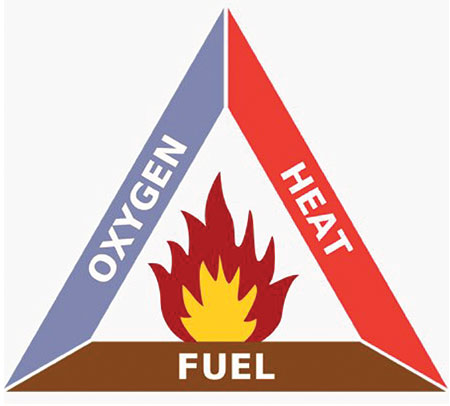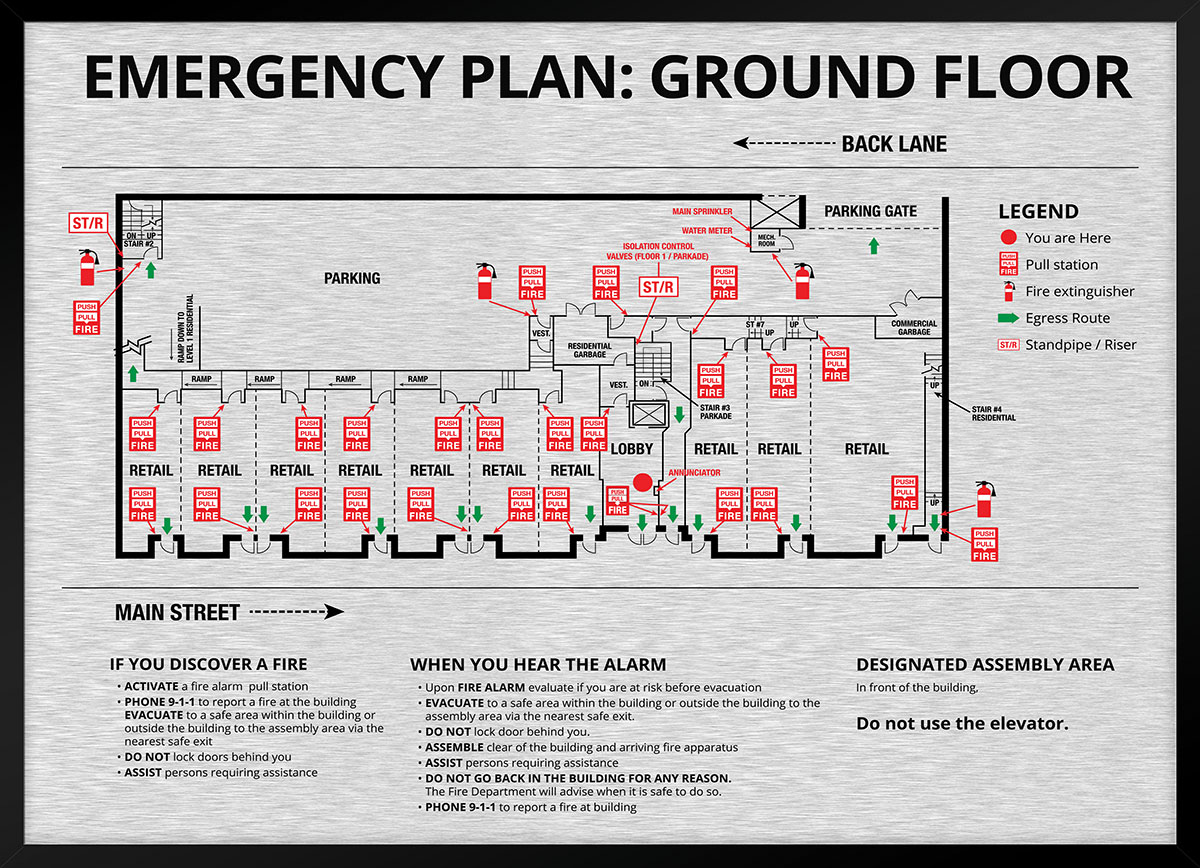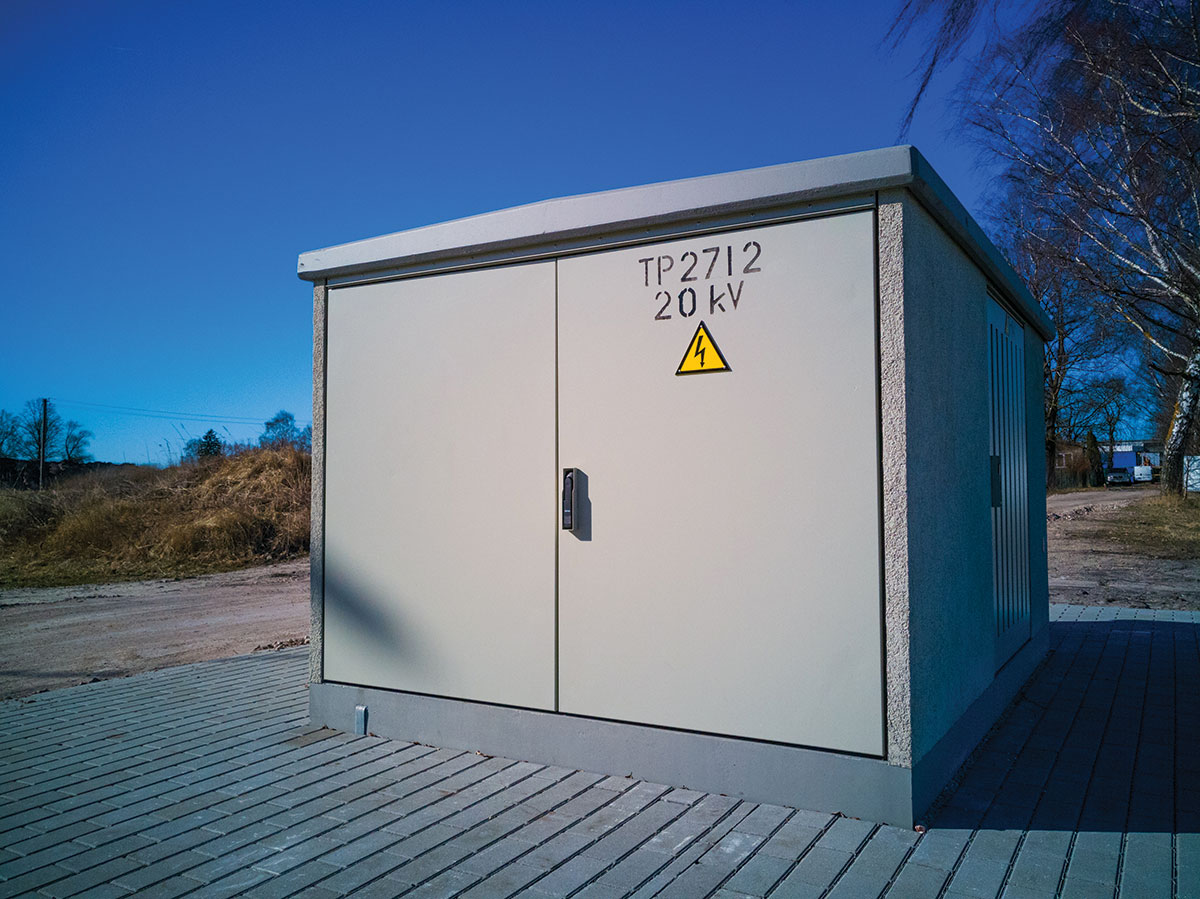If a fire occurs as a result of a failure in a transformer, then the transformer is nearly always a total write off. However, the total cost of a transformer fire is typically in the order of 2–3 times the cost of the replacement transformer and can in unfavorable events be many times the cost of the transformer, even without including the cost of loss of supply for customer.
The strategy therefore is:
- Minimize the risk of the transformer fire occurring.
- Protect the potential fire victims, humans, and the remainder of the substation installation from also being fire damaged.
- Maintain supply during the fire; or if not possible, then restore the supply as early as possible after the fire.
- Avoid pollution and contamination of the environment.
COMBUSTION PRODUCTS AND THEIR EFFECT ON LIFE AND SAFETY
The product of combustion can be divided into four categories:
- Fire gases
- Smoke
- Heat from fire and
- Loss of oxygen
In addition to the product from combustion, there is also the risk of pollution from oil spill and contamination by products used in transformer firefighting, such as foam, and possibly contaminated water! Each of these can have damaging effect on humans, other equipment, and the environment.
Each item will be discussed briefly below:
- Fire Gases
Transformer oil and cellulose insulation will burn to mostly carbon dioxide or carbon monoxide if the air supply is restricted. Other more toxic or corrosive gases can be released from burning of cable insulation. This is of particular concern with indoor installations of transformers. Heat and fire gases are major causes of fatalities in fires.
- Smoke
Smoke consists of very fine solid particles and condensed water vapor. In many cases smoke reaches untenable levels before the temperature does. This is especially so when fire occurs indoors or in confined areas.
Smoke particles can cause damage to the respiratory system, and it may impair vision if it lodges in eyes and thus impair the ability to escape the transformer fire.
- Heat from fire
Heat from flame can cause dehydration and exhaustion and, if intense and conducted into the lungs, cause serious decline in blood pressure and failure of blood circulation. Burns can be caused from contact with flames, heated objects or from radiation.
Heat exposure can cause physical shock and possible death! High level of heat radiation can cause instant death.
- Loss of Oxygen (fire consumes oxygen)
The oxygen level in normal air is 21% and if it drops below 15% then muscular skills diminish; at a further reduction to 14 – 10%, fatigue sets in and judgement becomes impaired. If oxygen is reduced to the range from 10 to 6%, complete collapse and unconsciousness occurs, but revival may still be effected if fresh air or oxygen becomes available.
CLASSIFICATION OF FIRES AND EXTINGUISHING AGENTS
Classification of fires as determined by National Fire Protection Association [NFPA]:
Class A. Fires in ordinary combustible materials (glowing after burning). The extinguishing agent is water.
Class B. Fires in flammable liquids. The extinguishing agent is fine spray of water (water mist or fogging). The blanketing or smothering effect keeps the oxygen away from the fuel.
Class C. Fires in electrical equipment. The extinguishing agent must be non-conducting [powder, carbon dioxide, vaporizing liquid (foams or water sprays) at a safe distance].
Fire resistance classification
The resistance of a substation structure and its construction material, including buildings, is normally indicated by a combination of code letter and number. Significant variations exist between countries in the test methods used and the classification code applied. But it is common to use a combination of letters and numbers as is done using the REI classification.
This classification method assigns a fire rating grading period in minutes based on three distinct criteria using the letters as follows:
R – Structural adequacy. The ability to maintain stability and load-bearing capacity.
E – Integrity. The ability to resist flame and passage of hot gases.
I – Insulation. The ability to maintain a temperature on the non-exposed surface below the specified limit.
REI 120/60/60 means the structure could be expected to maintain structural adequacy for 120 minutes; integrity for 60 minutes; and thermal insulation for 60 minutes for the defined conditions.
However, to compare different classifications it is necessary to understand both the test method and the classification coding applicable for the specific classification.
EXTINGUISHMENT OF FIRES (FIRE TRIANGLE)
The fire triangle provides a very good graphic presentation of how a fire can be extinguished.

Remove the heat
The fire can be extinguished if the heat is removed and the fuel is cooled below its fire point temperature. Water can be very efficient as a cooling medium to extinguish external fires and to protect adjacent assets from being heated to their flash point.
Water is less efficient in extinguishing a fire burning inside a transformer, as it is often difficult to get the water into the transformer tank and the oil will float on the top of the water and continue burning even if water is sprayed into a transformer tank.
Also for the same reason water alone is not efficient in extinguishing oil pool fires. Whereas water with foam can be very efficient for this purpose as it excludes oxygen from the oil surface.
Oxygen displacement or dilution
Removal of oxygen can be a very effective method of extinguishing fires where this method is possible. Only a slight decrease of the oxygen concentration in air decreases the fire intensity; and below 16% oxygen in the air, there is no risk for a fire.
Many alternative gases have been used successfully to displace or dilute oxygen and thus extinguish the transformer fire.
Gases commonly used for this purpose include carbon dioxide, halon, and nitrogen. (Halon is now disappearing from use, as it is considered a non-environmentally friendly gas).
The disadvantage for all of these gases has been that human beings could be suffocated if the gas is injected before all humans have been evacuated. CO2 is heavier than air and is often used in buildings and other areas where the gas can be contained and the displaced air can rise above the fire.
Nitrogen is lighter than air and is used for injection where the fire is at an upper surface and the nitrogen can be contained, as it can in a transformer tank.
Some manufacturers of transformer fire extinguishing systems have used nitrogen for injection into the base of oil-filled transformers to extinguish a fire burning from the oil surface. In this application nitrogen will stir and cool the oil in the transformer tank and displace the air above the oil and suppress the fire.
Foam and high pressure water fogging can also be used to displace oxygen. Foam can be very effective for use on oil pool fires, but is less effective on oil fires where oil is spilling over a vertical surface, and it is often difficult to get foam into a fire burning inside a transformer tank. Water deluge and high pressure water fog or water mist have the benefit of oxygen dilution as well as providing cooling.
Removal of fuel
Removal of fuel can be effective, but is often not possible. Some strategies for fuel removal exist for transformer oil, as it is possible to equip transformer tanks with oil dump valves which can be opened by remote control. Dumped and/or spilled oil can be directed into oil/water separation tanks or into gravel or crushed rock beds or other safe holding areas.
TRANSFORMER AS A FIRE VICTIM
The transformer can become a victim to a fire started elsewhere! As large power transformers contain large quantities of mineral oil, the potential for the transformer to add considerable quantities of high energy fuel to an existing fire exist and strategies to minimize the risk of releasing and igniting this fuel source should be considered as part of the substation design process.
The most effective protection is probably fire barriers and water spray for cooling and keeping the oil within the transformer tank, away from oxygen and below the flashpoint temperature.
Reference. Guide for Transformer Fire Safety Practices by Working Group A2.33 (Arne Petersen, Convenor Rudy Blanc, Kjell Carrander, Dayse Duarte, Yoshihito Ebisawa, Elisa J. Figueroa, Marc Foata, Makoto Kadowaki, Takayuki Kobayashi, Terence Lee, Russell Martin, Sidwell Mtetwa, Hiroshi Murakami, Uwe Rimmele and Yukiyasu Shirasaka.










Find Us on Socials